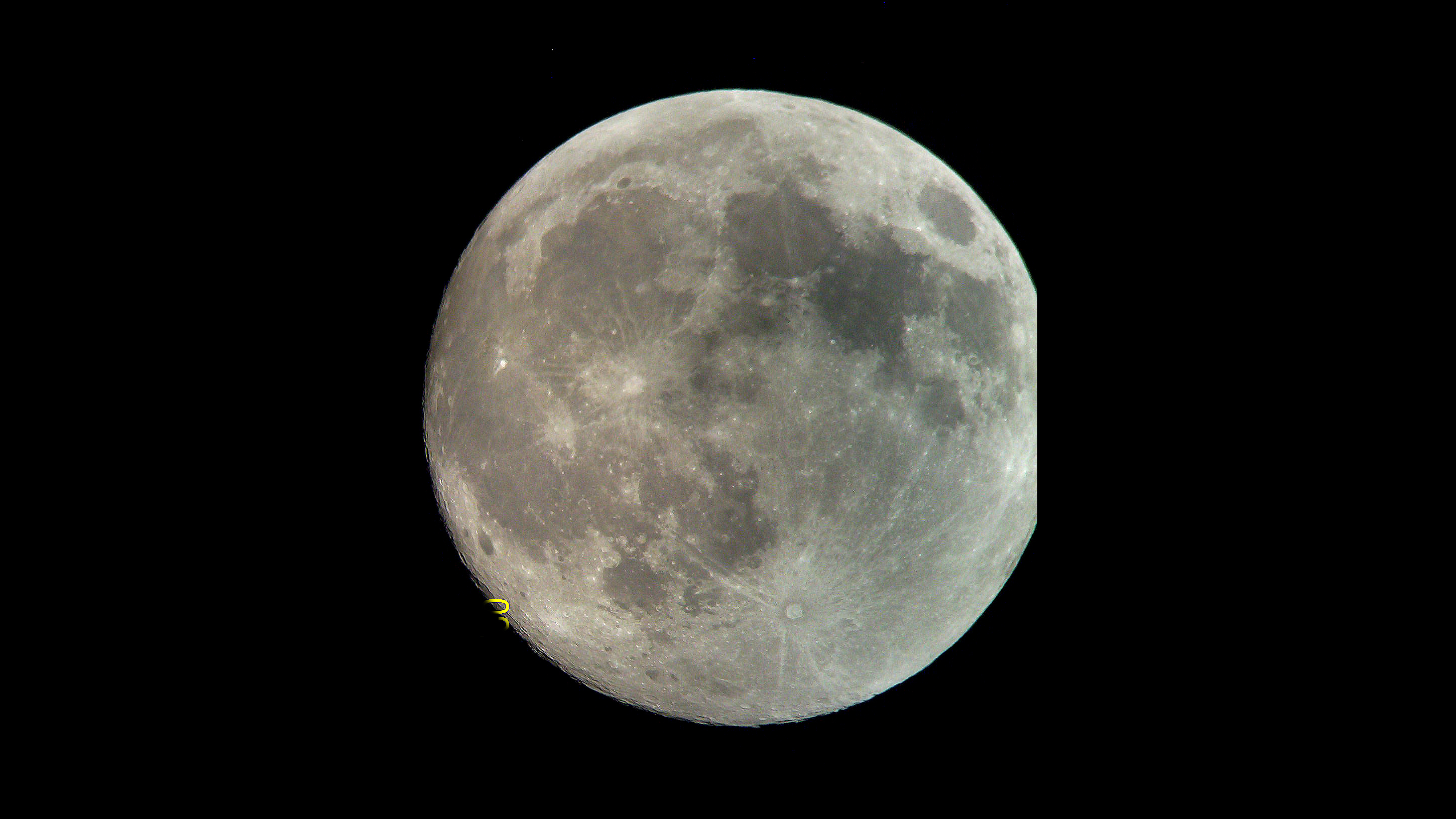
The August 2025 Full Sturgeon Moon is low in the southeast in this view due south at 10:30 PM, EDT, 2.5 hours after its rising at 8:05 PM EDT, Friday, August 8th. The teapot of Sagittarius is on the meridian, with Scorpio and its heart, the red supergiant Antares, to the west. View via Stellarium.
I gazed up at the full moon,
hanging low and bright oe’r the trees last night,
warm and inviting on that August night.
August’s full moon is known as a “Sturgeon Moon”
The August 2025 Full Sturgeon Supermoon is still low in the southeast over two and half hours after its rising at 8:05 PM, EDT on Friday, August 8. The teapot of Sagittarius is due south on the meridian at this time.
According to lore, August’s full moon is also known as a “Sturgeon Moon“. We’ve written extensively about the lore behind the moon’s names, most of which honor native traditions or coincide with seasonal events. This is especially relevant for hunter-gatherer or agrarian communities who depended on a plentiful harvest or hunt to survive. For example, last month’s full moon (July) was the Full Buck Moon since July’s full moon occurs when bucks (male deer) are in full-growth mode. Bucks shed and regrow their antlers each year, producing a larger and more impressive set as the years progress.
August’s moon is named as such because the giant sturgeon of the Great Lakes and Lake Champlain were most readily caught during August.
Additional information on the lore of the moon and its names can be found here and here. It also should be noted that each full Moon name is applied to the entire lunar month in which it occurred, not solely to the full Moon.
The 2025 Autumnal Equinox
The Vernal and Autumnal Equinoxes are two days during the year with 12 equal hours of daylight and darkness. The Vernal Equinox heralds the beginning of Spring and the Autumnal Equinox, Autumn.
The Autumnal Equinox for this year occurs Monday, September 22, 2025, 18:19 UTC (Monday, September 22, 2025, at 2:19 PM EDT). Many astronomical dates throughout the year can be found here.
What does the ‘Beginning of Spring’ or the ‘Beginning of Fall’ actually mean, and what’s so special about these dates?
The changes we normally associate with the start of a new season are climactic, such as changes in temperature or weather. So, what does the ‘Beginning of Spring’ or ‘Beginning of Autumn’ actually mean? To answer that, we’ll have to consider the astronomical year in its totality and the other two significant dates during the year, the Summer and Winter solstices. Those events represent the points during the year when the sun is at its highest and lowest points on the sky respectively.
The sun, at its highest point during the third week in June (June 20-22) in the Northern Hemisphere, represents the ‘beginning of summer’. Likewise, the sun is at its lowest point during the third week in December (December 20-22) in the Northern Hemisphere, represents the ‘beginning of winter’. The two Equinoxes occur when the sun crosses the Celestial Equator at the midpoint between these highest and lowest points (see the view above). The Celestial Equator represents the projection of the Earth’s equator on the sky.
It should be noted that the Southern Hemisphere experiences the same seasons but at opposite times during the year. Summer in Australia occurs during December and January, while Winter occurs during June and July.
The Astronomical Beginning of Spring or Autumn are conventions, marking the first and second point respectively since the beginning of the year when the sun crosses the Celestial Equator.
The Vernal Equinox in March marks the first time there are 12 equal hours of daylight and darkness. Similarly, the Autumnal Equinox, occurring during the third week of September, marks the 2nd and final time during the year when there are equal hours of daylight and darkness.
What Happens During the Equinoxes?
12 equal hours of daylight and darkness.
The opposite seasons begin for our friends in the Southern Hemisphere.
The sun rises due east and sets due west at any point on the planet.
The sun’s elevation above the nearest horizon (southern horizon for Northern Hemisphere observers and northern horizon for Southern Hemisphere observers) is exactly equal to the compliment of their latitude; for example, if your latitude is +40 (40 degrees north latitude), the elevation of the sun would be 50 degrees above the southern horizon.
For those interested in the Lore and Lure of the moon and the naming traditions, the full moon nearest to the Autumnal Equinox is known as the “Harvest Moon”.

Full Harvest moon, 2007. Full resolution image, courtesy the author. 15 cm F/4 Newtonian astrograph.
Extra
Science is, at its core, the pursuit of truth. Truth is an objective reality, not a perception, and we must follow that truth no matter where it leads. All our content springs from this central mission and philosophy. As such, our only agenda is to present and teach science (astronomy is the oldest of the sciences) from that position. We have no political agenda.
Since education is an interactive experience, all (or most) of our content is open for public comment. On a previously posted opinion piece by James Daly, Ph.D, two comments were posted to the article that prompted an update to our Comment Moderation Policy. Those comments have since been removed.
There is not now, nor will there ever be any AI tools or robots on our site. As such, all comments are individually read and manually vetted. This approach may take a bit longer but, in the end, our integrity will have been preserved.
We will never allow our platform to be the springboard or distribution point for various political narratives, agendas or ideologies. Nor will we ever allow for the dissemination of propaganda under the guise of free speech or commentary response.
Astronomy for Change is an AI Free Zone
From Las Cumbres Observatory, a quick, interactive web-based view of the sky at the moment, complete with interactive controls The Sky Now. The page includes “The Sky Tonight”, a quick, interactive web-based version of Stellarium.
Astronomy For Change: https://astronomyforchange.org
Did you enjoy this article or like what we do? Why not leave a tip or buy us a Coffee?
Follow Us On Twitter: https://twitter.com/astronomychange
Why not support us on Patreon: https://www.patreon.com/astronomyforchange
Imagination is more important than knowledge
![]()
An index of all articles can be found here.
Comment Moderation Policy
If you enjoyed this article, please consider supporting us with a modest donation
or through a subscription on our Patreon Page
Membership at Astronomy for Change is Free!



